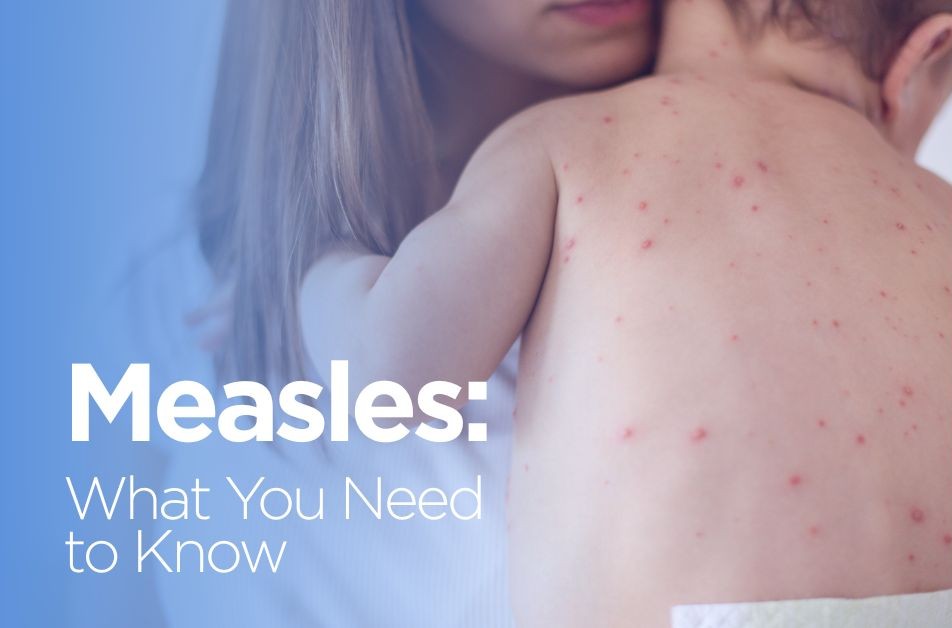
Measles is more than just a rash. Measles is a highly contagious disease that can lead to serious complications especially for babies and children under 5.
Measles is an airborne disease and is spread from person to person by breathing contaminated air, coughing, sneezing, or touching an infected surface and then touching your eyes, nose, or mouth. An infected person can spread measles to others even before knowing they have the disease. You can spread measles to others from 4 days before through 4 days after the rash appears.
The good news is that the MMR vaccine is safe and effective at preventing measles. Vaccination is the best way to stop the spread of measles and to protect yourself. It is extremely important to stay up to date with well child visits and immunizations. Most people who receive the two-dose series will be protected for life. If you or your child have symptoms such as a rash and a fever it is important that you disclose this information when making an appointment and when you see your healthcare provider. If you or your child are experiencing any symptoms, seek medical care immediately and please wear a mask to reduce the risk of spreading the disease to those who have not yet had the chance to be vaccinated.
Symptoms of measles typically show 7–14 days after contact with the virus. The CDC has provided a list of symptoms to look for.
Measles typically begins with:
- High fever (may spike to more than 104°)
- Cough
- Runny nose
- Red, watery eyes
2–3 days after symptoms begin:
Tiny white spots (Koplik spots) may appear inside the mouth two to three days after symptoms begin.
3–5 days after symptoms begin:
Measles rash appears 3 to 5 days after the first symptoms. It usually begins as flat red spots that appear on the face at the hairline. They then spread downward to the neck, trunk, arms, legs, and feet.
- Small, raised bumps may also appear on top of the flat red spots.
- The spots may become joined together as they spread from the head to the rest of the body.
- When the rash appears, a person’s fever may spike to more than 104° Fahrenheit.
If you or your child experience any of these symptoms, please call your primary care provider right away!




